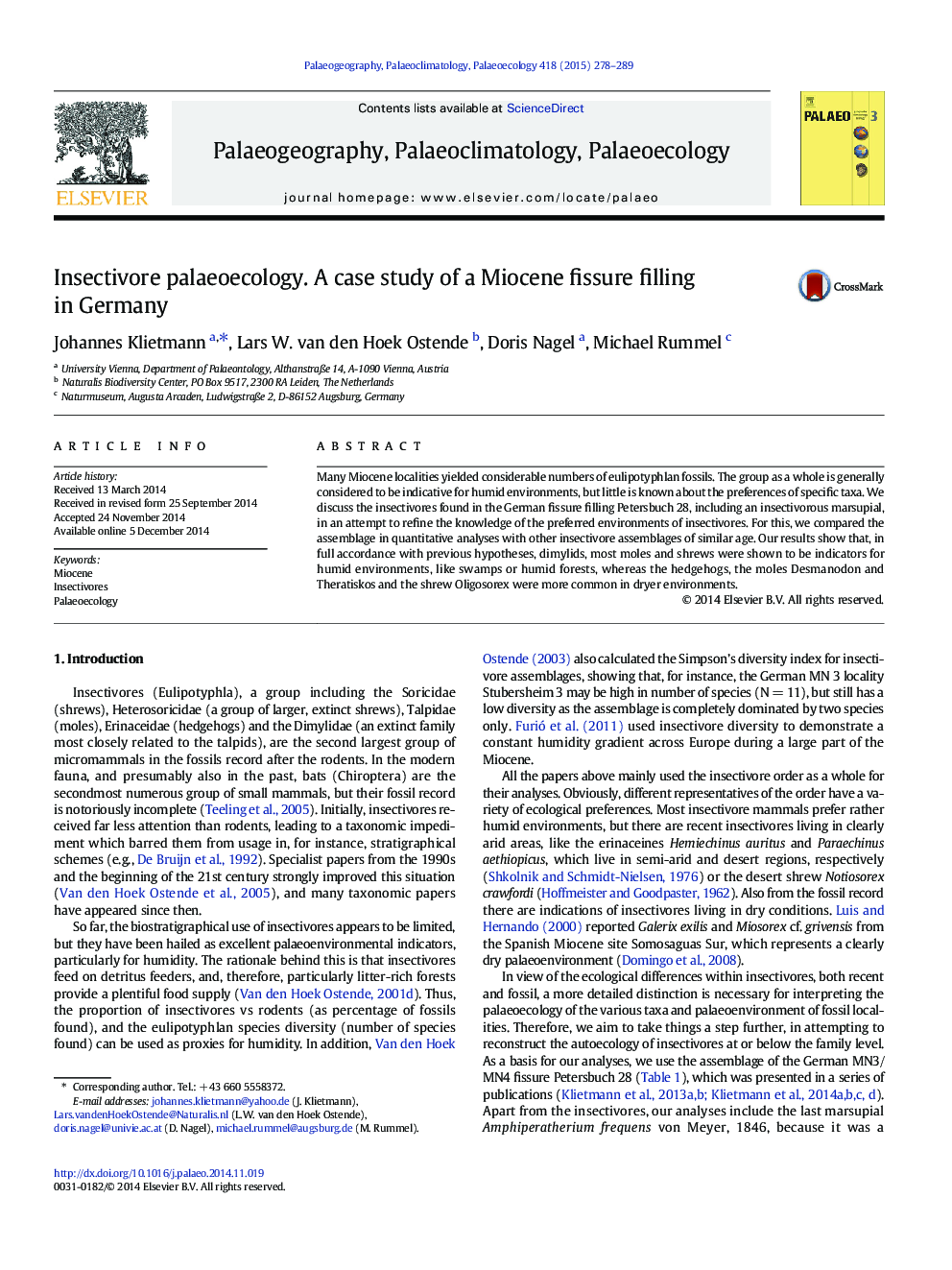| Article ID | Journal | Published Year | Pages | File Type |
|---|---|---|---|---|
| 6349817 | Palaeogeography, Palaeoclimatology, Palaeoecology | 2015 | 12 Pages |
â¢Insectivores can be used within quantitative ecological analyses.â¢Humidity was the most important factor for Miocene insectivores' palaeocommunities.â¢The ecological groups are a humidity dependant and a aridity tolerant group.
Many Miocene localities yielded considerable numbers of eulipotyphlan fossils. The group as a whole is generally considered to be indicative for humid environments, but little is known about the preferences of specific taxa. We discuss the insectivores found in the German fissure filling Petersbuch 28, including an insectivorous marsupial, in an attempt to refine the knowledge of the preferred environments of insectivores. For this, we compared the assemblage in quantitative analyses with other insectivore assemblages of similar age. Our results show that, in full accordance with previous hypotheses, dimylids, most moles and shrews were shown to be indicators for humid environments, like swamps or humid forests, whereas the hedgehogs, the moles Desmanodon and Theratiskos and the shrew Oligosorex were more common in dryer environments.
